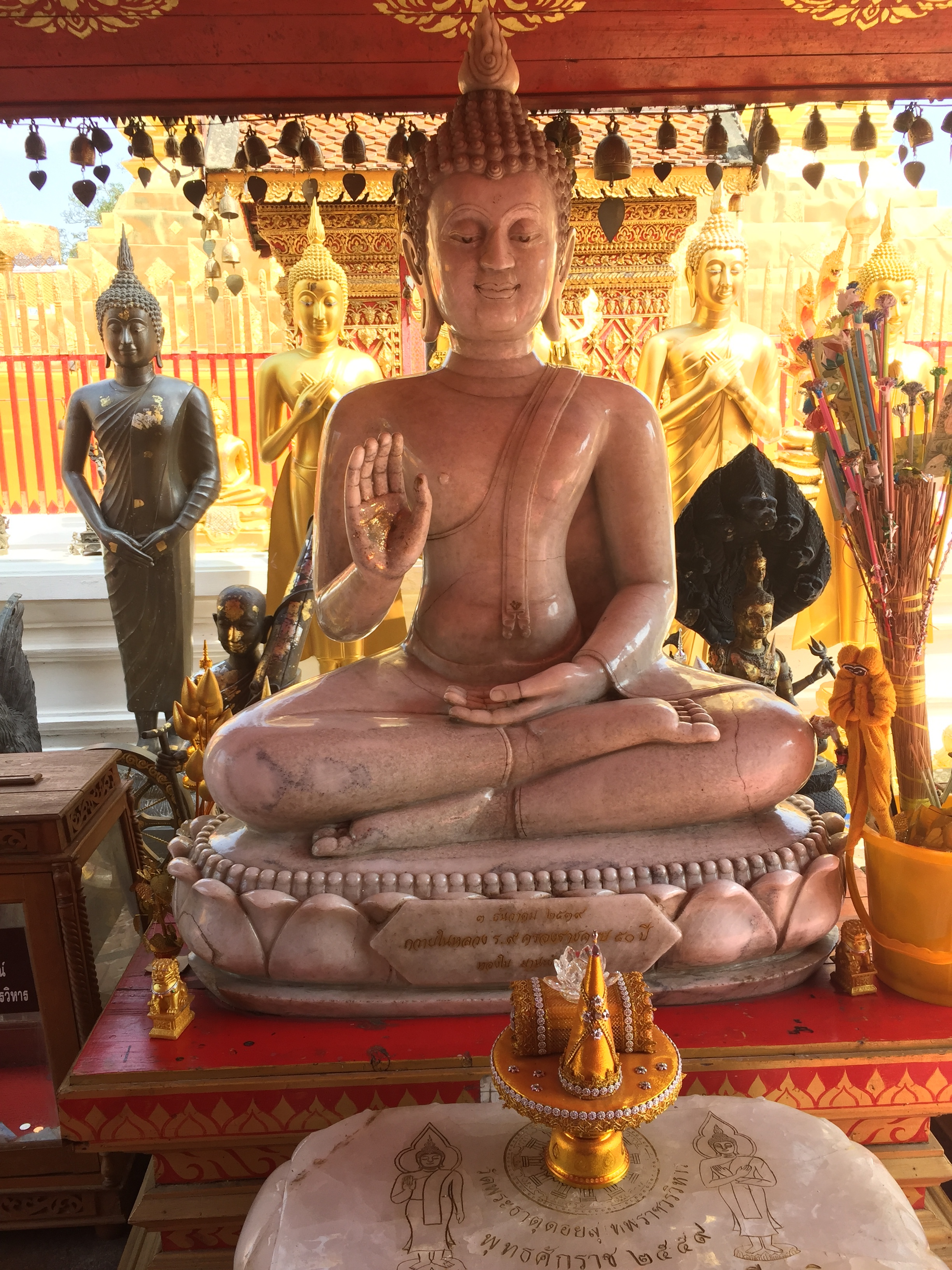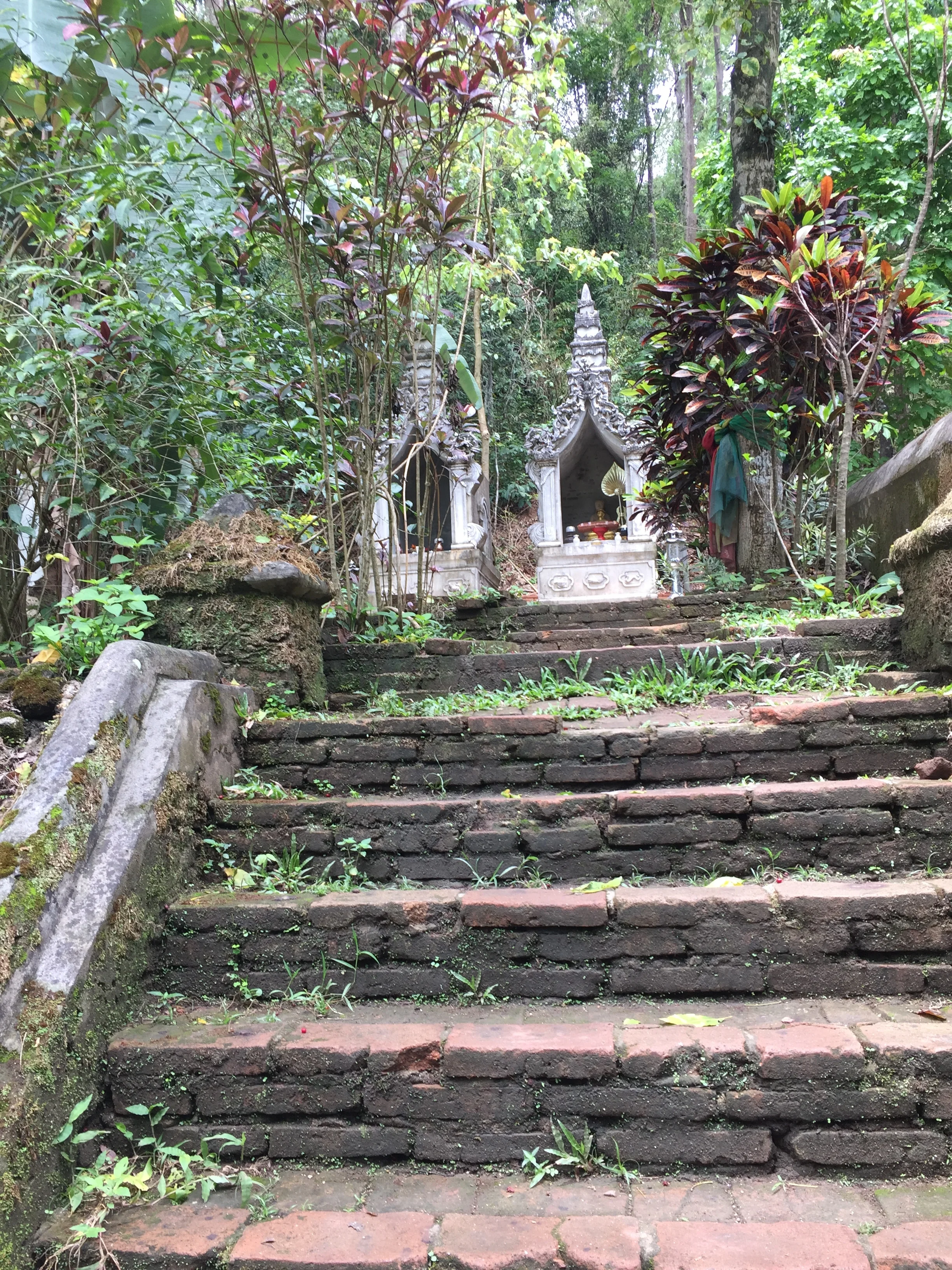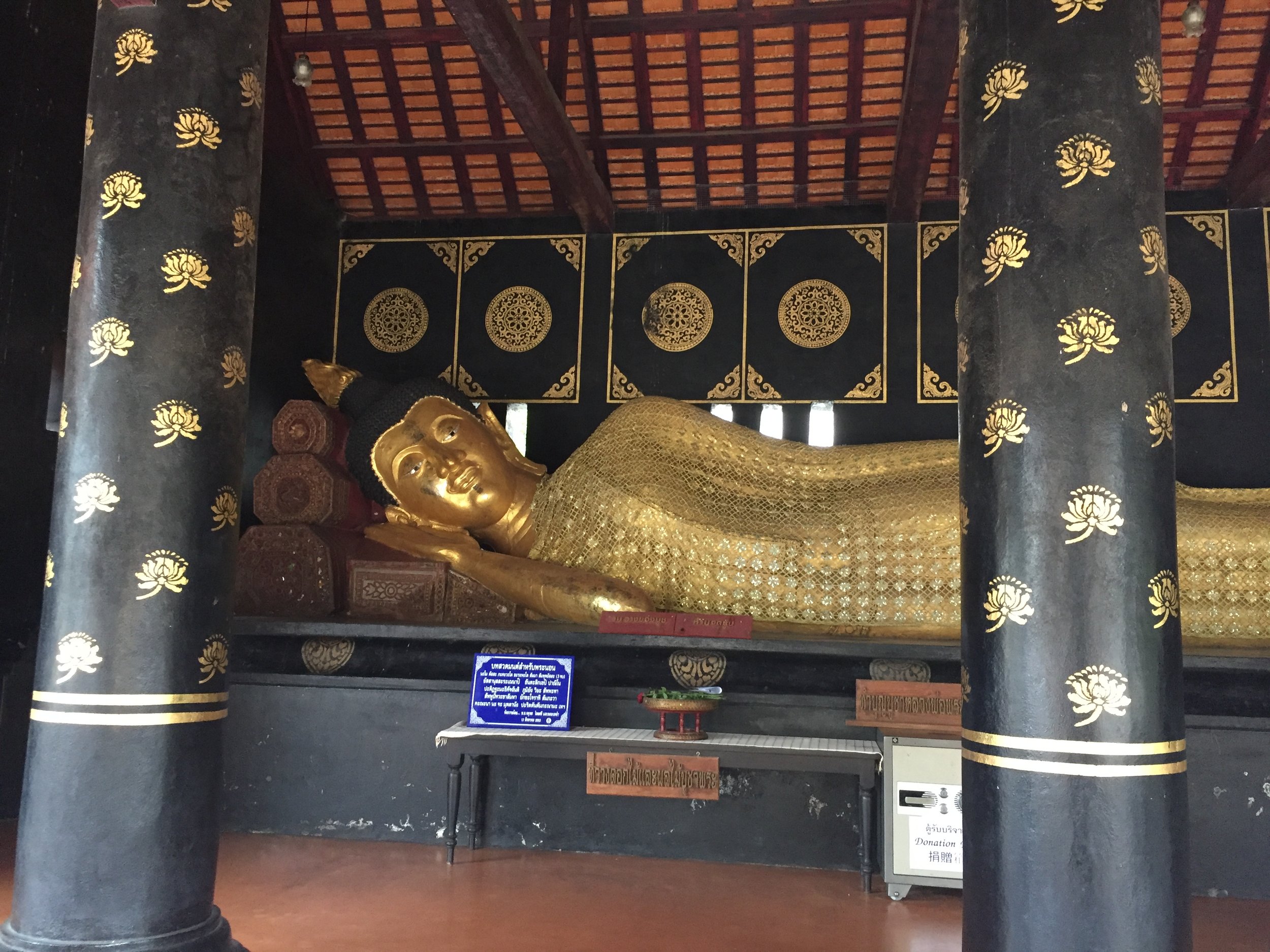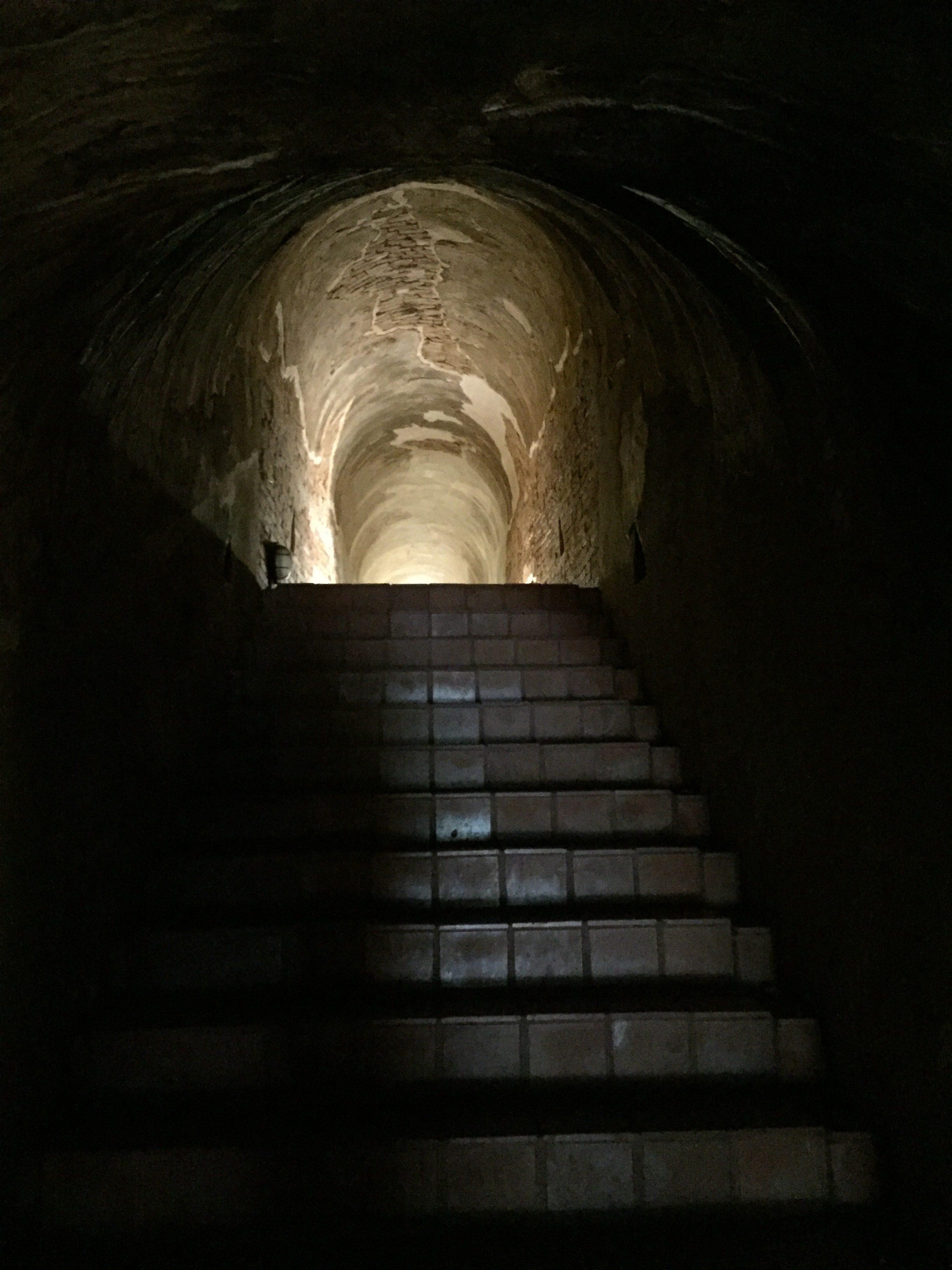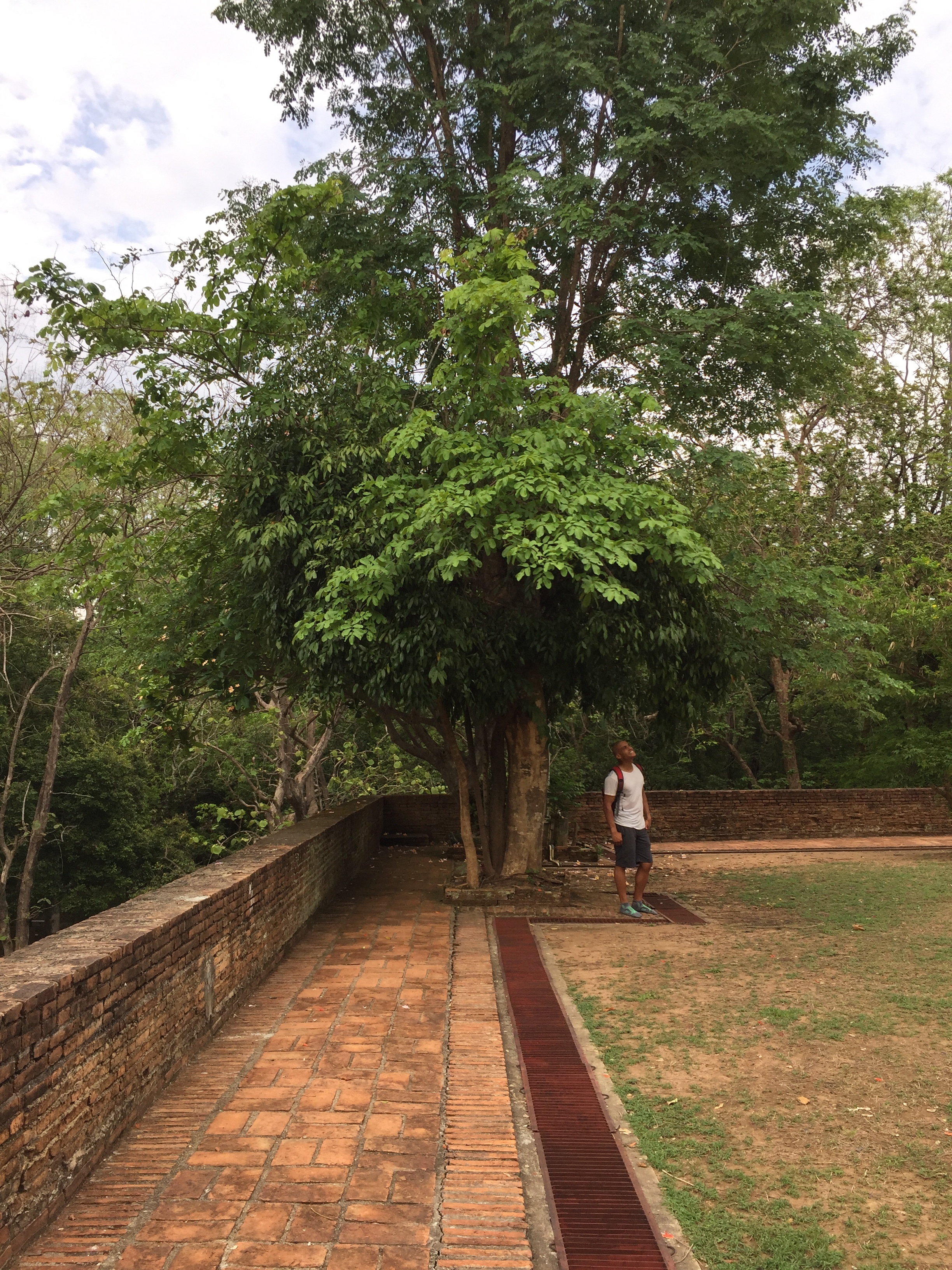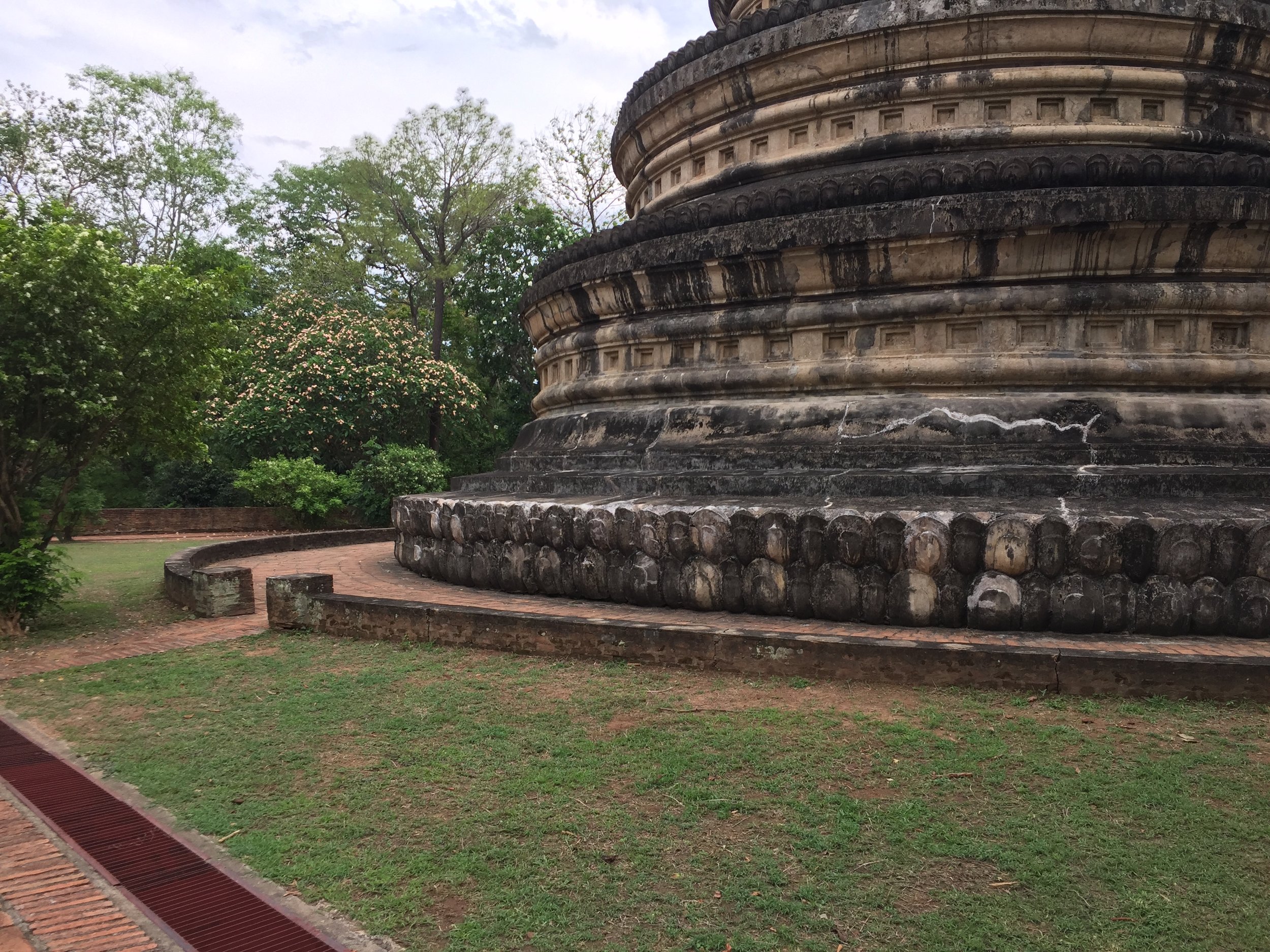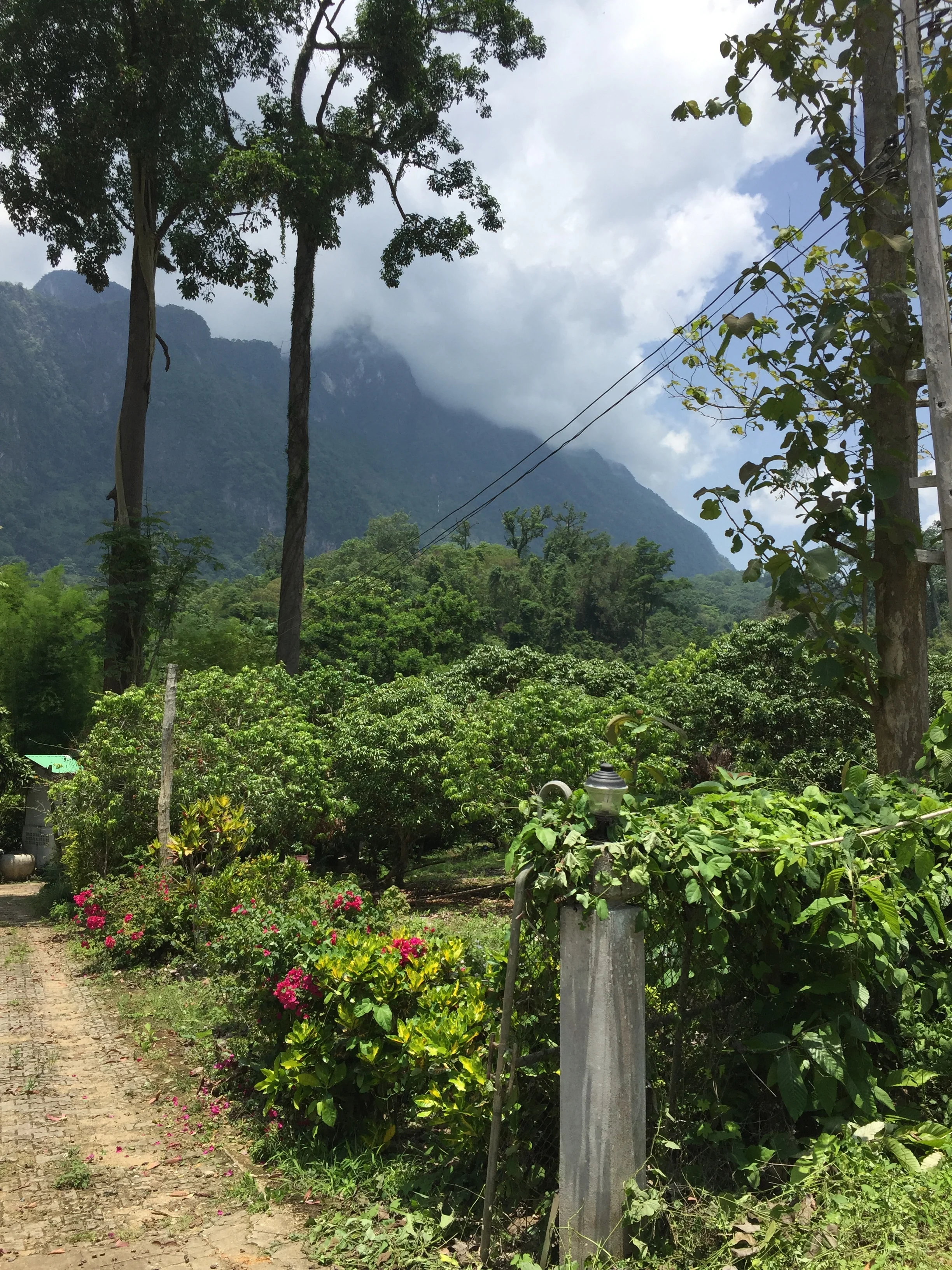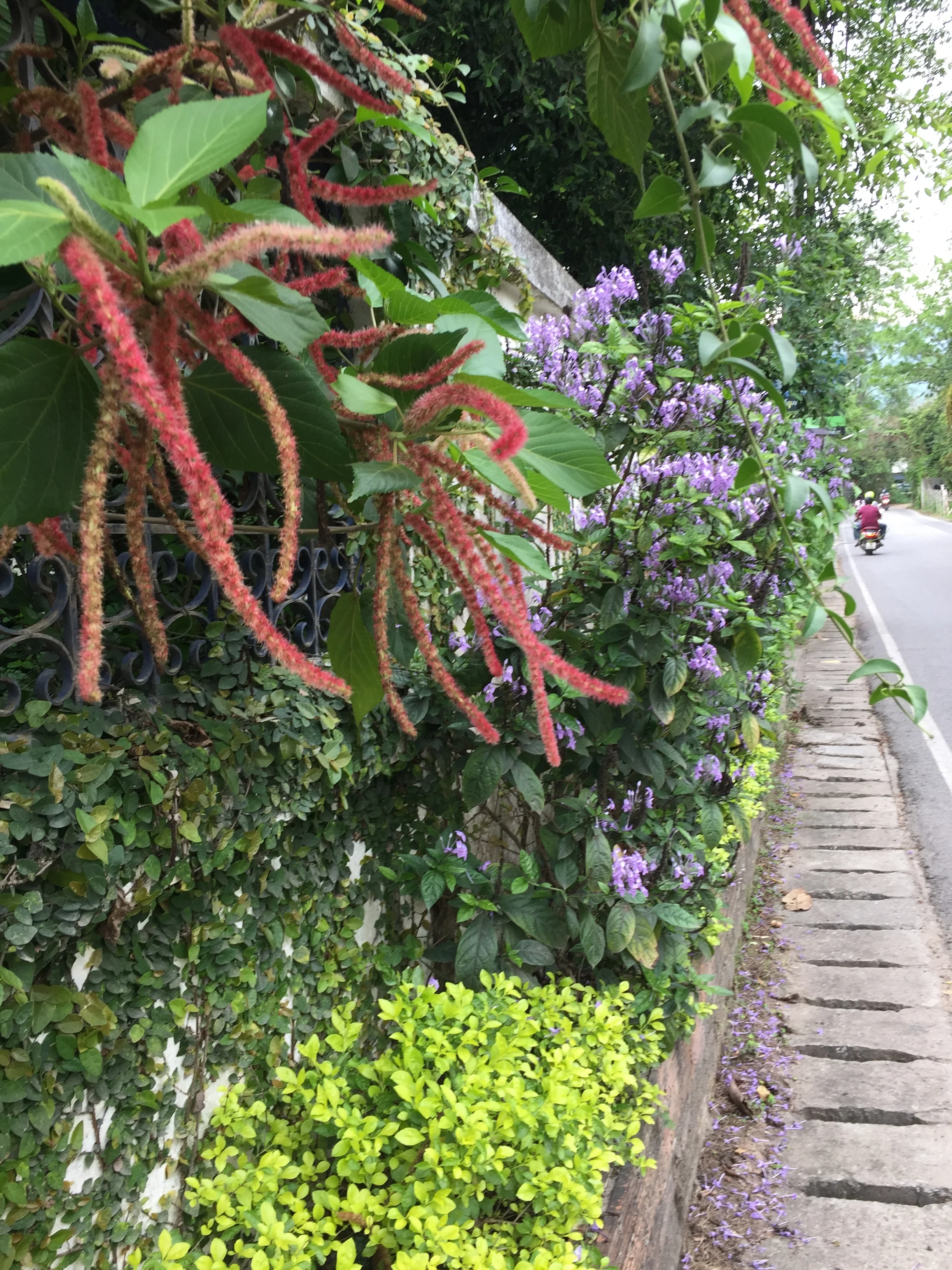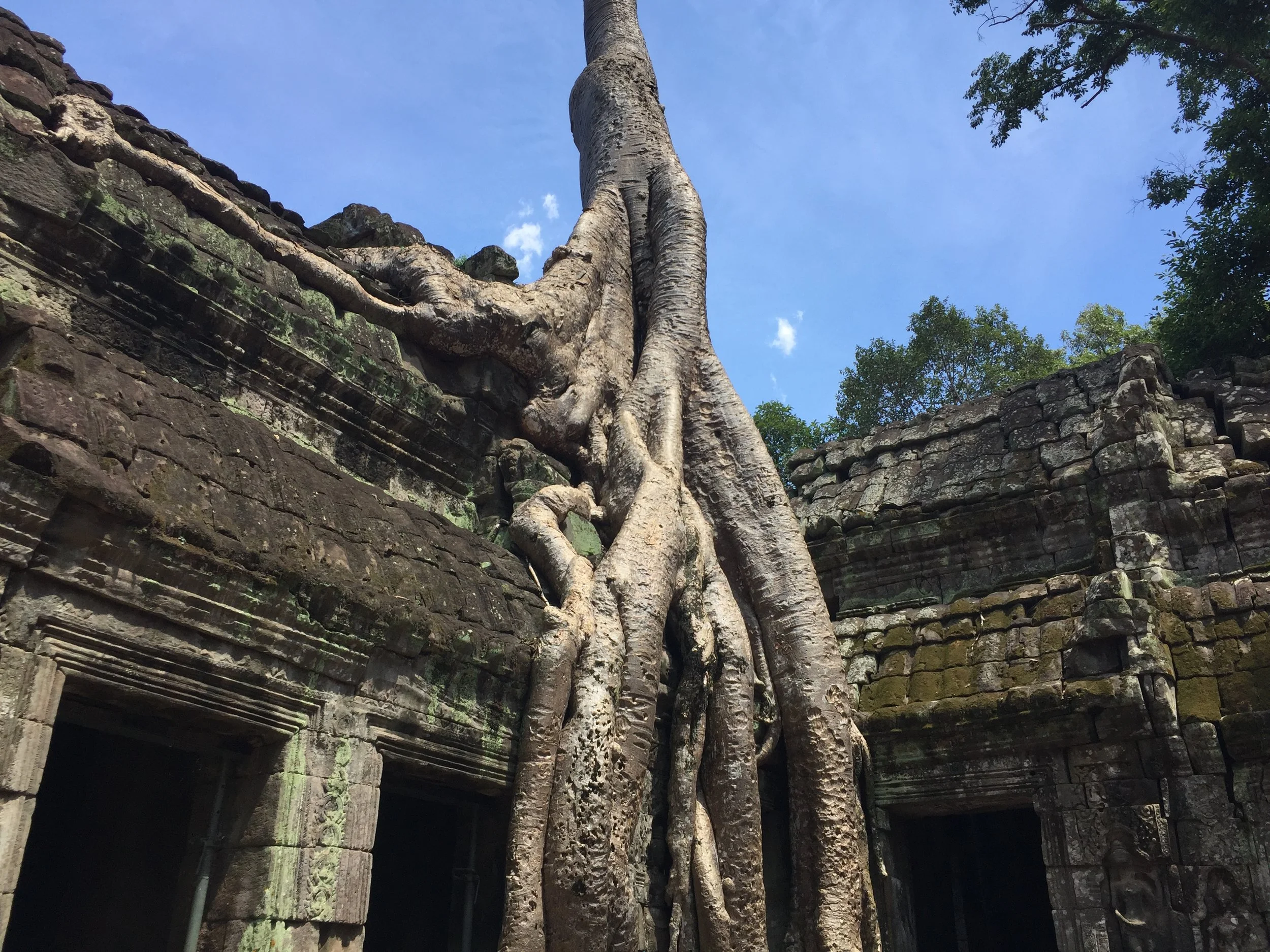Chiang Mai: Wat after Wat
Chiang Mai has more temples throughout the city and surrounding countryside than any other place in Thailand. The over 300 wats, or Buddhist temples, typically portrays the Lanna style, with a curved wooden roof, constructed between the 13th and 18th centuries.
The city has a tremendous history, centered around a 600 year old moat. Kings built temples to prove their devotion and power. Thus, the monasteries have long been intrinsically tied to the city's culture. Temples are still a central part of Thai life, perpetuating ancient Buddhist traditions.
I quickly learned to carry a scarf and sarong in my day pack, in case we passed a temple in our travels. We visited a few must-see wats, but also enjoyed the hidden gems we came across unexpectedly. Below are five of the wats we visited:
1) Wat Phra That Doi Suthep
The temple is located on the mountain Doi Suthep, also an abbreviation for the most well known temple in Chiang Mai. The wat is largely synonymous with the city itself, as a dominating fixture on the horizon.
Notably, the regal pagoda is known to contain relics of Buddha.
We climbed the over 300 steps to reach the main temple complex.
It was built in the 13th century on the east side of the mountain, just below the summit.
The wat has grown over time, with the addition of elaborate shrines.
Tuk tuks aren't permitted on the ride up, so we hailed a songthaew. The first road to the temple was built in 1935.
There is a detailed mural of scenes from Buddha's life, which served as a wonderful learning opportunity for us. The paintings helped us to better understand some of the figures, hand symbol mudras, and reoccuring art.
We admittedly didn't know specifics of Buddha's legacy, and thus spent a couple hours exploring the complex. We partook in an informal ceremony, in which for a small donation to the temple, we were blessed by a monk.
Visitors are also encouraged to sign a monk's cloth.
Outside of the temple, it's the smallest daily indicators that reminded me that it's a different culture than I've been exposed to.
We learned that while chemical dyes have generally replaced natural dyes, traditional colors remain. In Northern Thailand, for example, monks used heartwood from the jackfruit tree.
As the morning went on, there was a significant influx of visitors. Despite the crowds, the wat remains a sacred place of worship for Buddhists.
2) Wat Pha Lat
After the glitz of Wat Doi Suthep, we appreciated the less crowded Wat Pha Lat.
About half way up to Wat Doi Suthep, this templed is nearly hidden in a lush mountain setting.
The jungle temple feels lightyears away from the streets of Chiang Mai.
Jungle temples typically serve as a location for monks to live a calmer way of life, compared to city temples.
Originally, Wat Pha Lat served as a resting place for monks during their trek to the larger temple on the hilltop.
However, once the road was constructed in 1935, the temple transitioned to more of a meditation site.
Upon entering there's an extreme sense of serenity.
TWat Pha Lat literally translates to "Monastery at the Sloping Rock."
After exploring the complex, we walked down through a nature trail back to the city.
We initially planned to walk up the trail and back down, but there was a miscommunication with our songthaew driver, and he dropped us directly at the temple.
Which was fine, because we had a nice leisurely walk down.
For me, it was a highlight during our time in Chiang Mai.
It did feel like we were traversing a remote jungle, with pieces of monks' orange robe as the only signs on the trail.
In such a populated city, we found it remarkable we were the only ones on the path. With so many sites in Chiang Mai, I felt it was one of the few hidden gems. One piece of advice, bring bug spray.
3) Wat Chedi Luang
Wat Chedi Luang's is centrally located in the Old City, which makes it a convenient and worthwhile destination.
It's massive pagoda, or tiered tower, was constructed between 1385 and 1402, during the reign of King Saen Muang Ma, 7th ruler of the Mengrai dynasty.
The temple was damaged by an earthquake in 1545, and the Chedi’s height was cut by nearly half. Regardless, it's still tremendously impressive.
It's largely known for once being the home of the Emerald Buddha, Thailand's most sacred religious relic.
The complex includes several chapels and Buddha statues.
Despite my conservative sarong and scarf, there were still locations I was prohibited to enter as a woman.
We visited around 6 p.m. and the highlight was sitting in on the monks' nightly chant in the main temple. Inside, a dominating Buddha stands between his two disciples. Visitors were permitted to sit and observe in the back. I was grateful to experience this daily ritual I've only heard from outside of the temples. It was beautiful.
4) Wat Fai Hin
We came across Wat Fai Hin inadvertently. It's a a small, lesser known temple behind Chiang Mai University.
The temple was more simple in nature than what we had previously seen.
It was times like these where we felt jaded by the architectural detail.
Albeit small in size, the temple dogs guard ferociously, so be mindful when passing.
5) Wat Umong
This was our favorite wat we visited in Chiang Mai. It's one of the only forest temples in the area and a peaceful oasis from the often traffic clogged city.
It's is located at the base of Doi Pui Mountain.
The verdant complex includes underground cave temples, an ancient Chedi, and a peaceful lake.
Wat Umong's Chedi appears to be crumbling, but that's because it was constructed in the 13th century.
The old ruins were preserved as well as remarkable underground meditation tunnels .
Although the complex has a functional monastery where monks still reside and worship, the tunnels are rarely used for meditation today.
The ceiling of the tunnels reveal Buddhist sketches that are believed to date back to the 13th or 14th century.
We climbed the steps to view the Chedi, and once we surfaced, we were literally among the tree tops.
The Chedi was one of the oldest we experienced.
It certainly felt as if we were in a forest, but there was a faint hum of monks chanting along with roosters crowing and dogs barking.
We had a brief encounter with the protective temple dogs, our first of many to come.
There was plenty to explore. A lake with a small island is situated to the left of the temple.
Before the bridge there is a small stall selling fish food for the catfish, which are to be considered good luck.
It was overrun by pigeons, but as long as you get by them more gracefully than I, you'll be able to take in the seclusiveness.
There are far more temples and lots more to learn, but we found this to be a good starting point.






